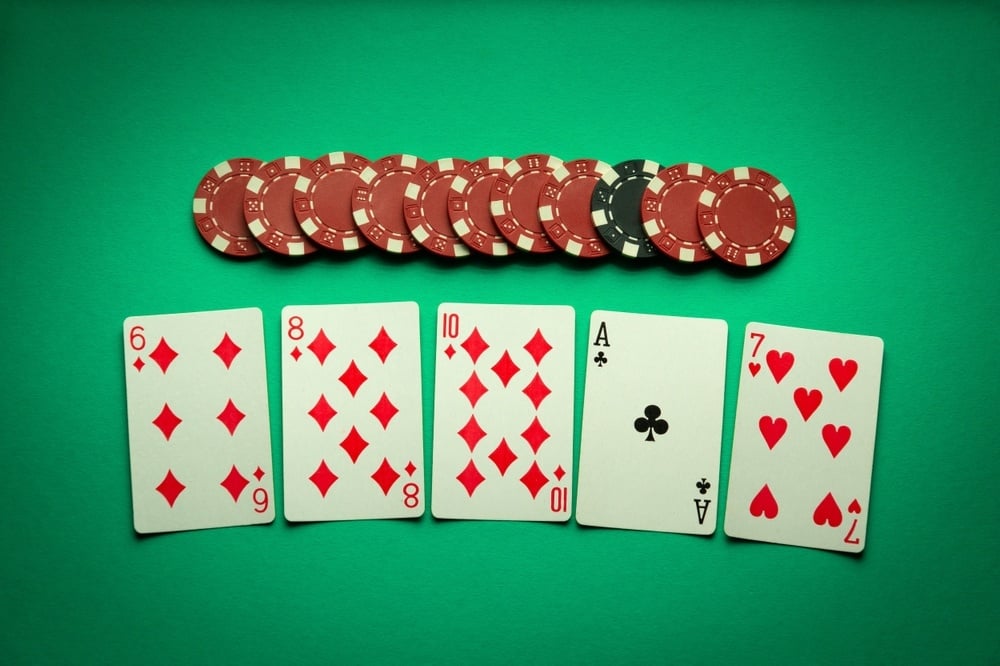The Ultimate Guide to Omaha Poker Strategy

Image Credit: VITALII BORKOVSKYI/Shutterstock
Essential Omaha Poker Strategies Every Player Must Know
Omaha poker stands out for its intense action, strategic depth, and dramatic swings. Whether you’re entering a cash game or competing in a tournament, understanding the unique dynamics of Omaha can make all the difference. Here are the foundational strategies you need to master:
- Recognize Strong Starting Hands: Understand which starting hands offer genuine potential, as the best hands in Omaha differ from those in Texas Hold’em.
- Pot Limit Approaches: Pot Limit Omaha (PLO) requires a disciplined approach to hand selection, positional play, and pot management.
- Nuances of Bluffing: While bluffing is part of Omaha, it is less prevalent than in Hold’em due to the frequency of strong hands at showdown.
- Value Drawing Hands: Drawing hands play a pivotal role in Omaha, so learning to identify strong draws (and spot them in your opponents) is key.
- Handling Multiway Pots: Larger multiway pots are common in Omaha, making advanced tactics and cautious decision-making essential for long-term success.
With four hole cards instead of two, Omaha produces more powerful hands and substantial pots, heightening the action and calling for a refined strategy compared to other poker variants.
Transitioning from Hold’em: Key Omaha Differences
Players familiar with Texas Hold’em will find several strategic differences when switching to Omaha. The game is offered in several betting formats-Limit, Pot Limit, and occasionally No Limit-but Pot Limit Omaha (PLO) is by far the most widely played.

Image Credit: VITALII BORKOVSKYI/Shutterstock
In both Omaha and Hold’em, the structure includes small and big blinds, with community cards dealt during the Flop, Turn, and River. However, Omaha’s four-card starting hand means the potential for draws and big hands increases exponentially. Importantly, players must use exactly two of their hole cards combined with exactly three community cards to make their best hand-no more, no less. This simple rule is critical for accurate hand reading and avoiding costly mistakes.
Omaha Poker Gameplay Explained
Let’s break down how a typical Omaha hand unfolds:
- Preflop: Each player receives four hole cards. Betting starts with the player to the left of the big blind, using fixed amounts (in Limit) or up to the pot size (in PLO).
- The Flop: Three community cards are revealed. Players can check, bet, or raise, always remembering to use two of their hole cards with three board cards.
- The Turn: The fourth community card prompts another round of betting.
- The River: After the final community card is dealt, a last betting round occurs before the showdown.
Expect to witness very strong hands in Omaha. For example, a paired board often signals a possible full house, and seeing three cards of the same suit may indicate a potential flush. Adjust your hand strength assessments accordingly.
Why Pot Limit Omaha Dominates the Omaha Scene
Pot Limit Omaha is the variant of choice in most settings, distinguishing itself from its limit-based siblings. While fixed-limit offerings persist in mixed game rotations like HORSE-where Omaha Hi-Lo sits beside Hold’em, Razz, Stud High, and Stud Hi-Lo-PLO delivers dramatic betting swings and additional strategic challenges. The maximum allowable bet in PLO equals the size of the pot, enabling rapid increases in bet sizes and bigger pots. This makes PLO especially popular with players seeking action-packed gameplay.
“Hold’em is the most elementary of poker games. Omaha requires a little more thinking; it is a little more of a brain game. If you don’t catch cards in Hold’em, there’s nothing more boring.”
-Robert Turner, Inventor of Omaha Poker

Image Credit: VITALII BORKOVSKYI/Shutterstock
Core Strategic Principles for Pot Limit Omaha
Success in Omaha poker contracts on informed decision-making, requiring both technical knowledge and adaptability. Key pillars of professional PLO play include:
Evaluating Premium Omaha Starting Hands
Selecting the right starting hands is more critical in Omaha than in most poker variants. Because the game presents more possibilities for strong combinations, prioritize hands that offer multiple routes to the nuts, particularly those that are double-suited. The top examples include hands like double-suited aces and kings (e.g., AhAsKsKh), which unlock substantial potential for straights and flushes.
| Rank | Hand Combination |
|---|---|
| 1 | A-A-K-K |
| 2 | A-A-J-10 |
| 3 | A-A-Q-Q |
| 4 | A-A-J-J |
| 5 | A-A-10-10 |
| 6 | A-A-9-9 |
| 7 | A-A-x-x |
| 8 | J-10-9-8 |
| 9 | K-K-Q-Q |
| 10 | K-K-J-J |
Keep in mind, high pairs alone are far less invulnerable in Omaha than in Hold’em. Always consider the board texture and be prepared to fold big pairs if circumstances warrant.
Capitalizing on Positional Advantage
Acting later in the betting order gives you the benefit of additional information. In Omaha, the button (last to act) is especially valuable, but the advantage of late position extends throughout the game. Early position players must tighten their hand selection given the likelihood of facing post-flop aggression from multiple opponents. Conversely, late positions open up more opportunity to play a broader range of hands and utilize strategic raises or bluffs.
Key Tactical Moves to Strengthen Your Omaha Game
- Assess Board Texture Continuously: When evaluating your own potential and your opponents’ likely holdings, scrutinize the community cards for possible straights, flushes, or full houses.
- Right-size Your Bets: Use pot-sized bets when strong to maximize value, or smaller bets at times to induce bluffs from weaker hands.
- Control Pot Size: Avoid building large pots with mediocre hands, especially against multiple opponents.
- Stay Flexible: Adjust your tactics by carefully observing the habits and betting patterns of your opponents across different spots at the table.
- Don’t Overvalue Big Pairs: Hands such as double aces are not invincible-if the board runs out poorly or shows intense opponent aggression, let them go.
- Seek “Wraps”: Straight draws (wraps) with nine or more outs often justify aggressive action, sometimes offering up to 20 outs for powerful draws.
- Understand Redraws: Even if you currently hold the best hand, additional outs on later streets (redraws) can further improve your position or help avoid being drawn out on.

Image Credit: Luxora/Shutterstock
Common Errors to Avoid in Omaha Poker
The increased number of possible combinations in Omaha amplifies the risk of mistakes, particularly for newcomers. Avoid falling into these frequently seen traps:
- Relying on weak starting hands.
- Chasing with marginal holdings against large bets.
- Overplaying too many hands instead of folding low-probability ones.
- Bluffing excessively in multiway pots.
- Misinterpreting your best hand (remember, you must use two hole cards).
- Misreading opponents’ likely ranges and strengths.
Exploring Advanced Omaha Poker Variants
Once you’re confident with standard Omaha, consider expanding into these widely played variants for a fresh challenge:
Omaha Hi/Lo (8 or Better): Split-Pot Challenge
Omaha Hi/Lo, often called “Omaha Eight or Better,” divides the pot between the highest and the lowest qualifying hands. To make a low, the highest card must be an 8 or below, with the best low being A-2-3-4-5. If there’s no possible qualifying low, the whole pot goes to the best high hand.
Skillful players can “scoop” both high and low halves of the pot by constructing hands that qualify for both. No matter how tempting, be wary of low hands such as A-2-3-5-9-they don’t meet the low requirement.

Image Credit: VITALII BORKOVSKYI/Shutterstock
Big O (Five Card Omaha): Enhanced Combinations
Big O follows the same principles as standard Omaha, but with five hole cards instead of four, greatly increasing hand possibilities. Players still must use exactly two hole cards. The variant requires heightened attention to board texture and is popular in many mixed games and tournaments.
HORSE and Other Mixed Omaha Games
Omaha regularly appears in mixed formats like HORSE, challenging players to transition between multiple poker styles. To succeed, players must build expertise not only in Omaha but in the full spectrum of games included in the rotation.
Pineapple Poker: A Hybrid Mix
Pineapple variants blend Omaha and Hold’em by dealing three cards to each player. In “Crazy Pineapple,” one card is discarded after the flop, whereas in “Lazy Pineapple,” players keep all three cards but can use only two at showdown. “Super Hold’em” allows for using any combination of three hole cards after the river. Mastering each version requires thoughtful adjustments to standard Omaha strategies.
Winning Strategies for Omaha Hi/Lo (Eight or Better)
Hi/Lo variants remain a staple of major tournaments such as the World Series of Poker. Optimal play involves seeking hands that hold potential for both halves of the pot. Aim for double-suited, low/high combos, such as A-A-2-10, to maximize your scooping chances.
| Rank | Hand Combination |
|---|---|
| 1 | A-A-2-3 double-suited |
| 2 | A-A-2-4 double-suited |
| 3 | A-A-2-3 suited |
| 4 | A-A-2-5 double-suited |
| 5 | A-A-2-4 suited |
| 6 | A-A-3-4 double-suited |
| 7 | A-A-2-3 non-suited |
| 8 | A-A-2-2 double-suited |
| 9 | A-A-3-5 double-suited |
| 10 | A-A-2-6 double-suited |
- Prioritize Low Draws: Playing A-2 offers the best shot at capturing the low half; if your hand misses, fold if there’s no decent high draw.
- Increase Bets While “Freerolling”: When you hold the nuts in one direction, keep building the pot aggressively, especially when your low is unbeatable and you can’t lose.
- Don’t Overcommit to Weak Lows: It’s easy to lose money with uncompetitive low hands-assess whether the board is more likely to favor A-2 hands.
- Seek Discounted Flops: Because the game is so draw-heavy, enter more pots cheaply to capitalize on potential low and high hands.
- Leverage Position: Positional awareness is as critical here as in any other variant, offering more options for both high and low pots.

Image Credit: VITALII BORKOVSKYI/Shutterstock
Practical Steps to Improve Your Omaha Poker Game
Ongoing practice and consistent study are the keys to developing a reliable Omaha strategy, enabling you to respond confidently to a wide variety of scenarios.
Top 5 Omaha Poker Improvement Tips
- Carefully select hands-don’t get attached to weak starters.
- Avoid chasing with board-unfriendly marginal hands.
- Emphasize wraps and redraws for greater odds of strong finishes.
- Adapt to the variant-target hands suited for the low in Hi/Lo.
- Know when to let big pairs go if the board offers little support.
Embracing Ongoing Learning and Experience
Becoming a formidable Omaha player requires hands-on practice. Playing at lower limits online is a great way to gain exposure to diverse hands and board setups without significant risk. Stay updated by reading reputable poker strategy guides, watching tutorials from professional players, and analyzing your own gameplay. Treat each session as a learning opportunity-adapt, improve, and refine your strategy over time.
Omaha Poker Strategy FAQs
How can I become a skilled Omaha player?
The best pathway to proficiency is frequent play-preferably at lower stakes to minimize loss while learning. Focus on solid starting hand selection, remain aware of board connectivity, and avoid calling with marginal holdings.
Is Omaha more challenging than Texas Hold’em?
Omaha generally offers more action and larger swings due to the sheer volume of drawing hands and hand possibilities. For many, it’s more aggressive but also demands acute awareness and disciplined play compared to Hold’em.
How do you gauge the strength of straights versus flushes in Omaha?
Assessment depends on the community cards and your own hand-always use two hole cards, and match them against likely combinations for both straights and flushes. Stay vigilant about potential redraws as well.
Title Image Credit: VITALII BORKOV













